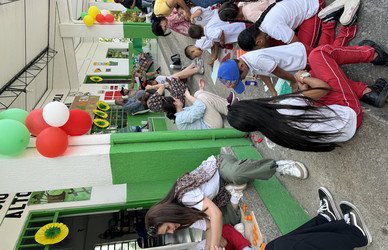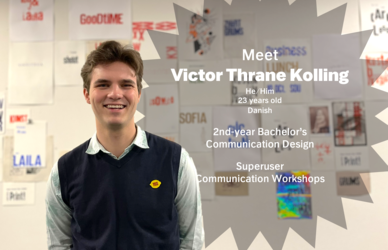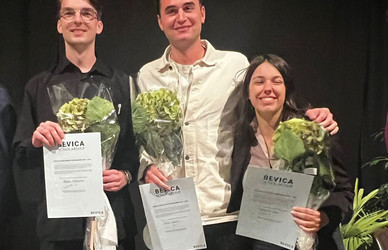Fantastic plastic
Aniruddha Gupte from industrial design has developed a kit that can be used for experiments with synthetic materials in the upper forms of the Danish public schools. This kit equips the next generation with tools to create their own recycling solutions.
The global challenge
On a global scale plastic recycling is a huge challenge. Aniruddha Gupte has identified four main reasons:
- Plastic is not just plastic but exists in several different chemical compositions, polymers. There are six overall types of polymers and plastic recycling requires that these are separated in order to recycle the material. The possibility of recycling the material may also depend on the colour.
- The majority of the existing machinery is unable to treat unclean raw material, i.e. plastic waste containing a mixture of polymers. In addition the machinery is very expensive and requires large investments.
- The conversion of plastic waste into compact pellets for recycling material requires substantial amounts of energy and is thus not immediately sustainable.
- In numerous countries – in particular 3rd world countries – plastic waste needs to be transported over vast distances in order to reach a recycling station that can recycle the material.
Do-It-Yourself system
The principle behind Aniruddha Gupte’s system is simple chemistry and involves finely sorting the plastics so they are ready for recycling. There are six types of polymers. In a specific chemical solution each of them will sink to the bottom while the other polymers stay on the surface. Aniruddha Gupte has therefore built five tanks.
Tank number one contains a mixture of different types of plastic cut into confetti. In this tank all pieces of PVC will sink to the bottom and are thus separated out. The rest of the material that stays on the surface of the liquid is collected in a small cylinder and dried with hot air. In the prototype experiment a simple hairdryer was used.
The bulk of the plastic containing the remaining five polymers are then placed in tank number 2 that contains a new solution. In this tank PET plastic sinks to the bottom and the remaining plastic material is dried again and placed in tank number 3, where yet another separation process takes place and so on.
After the end of that process all five tanks contain finely sorted plastic material where each polymer is ready to be recycled.
The system has already been successfully tested at the adult education centre Kolding HF and VUC.
Easy, fun and educational
Behind Aniruddha Gupte’s project is a pedagogical aspiration to democratise plastic recycling.
“When a large system is facing a challenge the solution can often come from below” he explains.
Therefore the final drawings will be shared in an open-source forum called ‘Precious Plastic’, where you will also find instructions for machinery that can re-cast plastic – into lamp shades, bowls, piggy banks and much more.
“Thus implementing the project will offer personal gain,” he explains, “and for the individual the transformation towards a better use of plastic can begin.”
See more examples on www.preciousplastic.com
In his basic research Aniruddha Gupte has visited and exchanged experiences with several Danish companies and institutions: Økolariet and RENOSYD and not least Aage Vestergaard Larsen A/S who is Denmark’s leading company in the field of plastic recycling.



